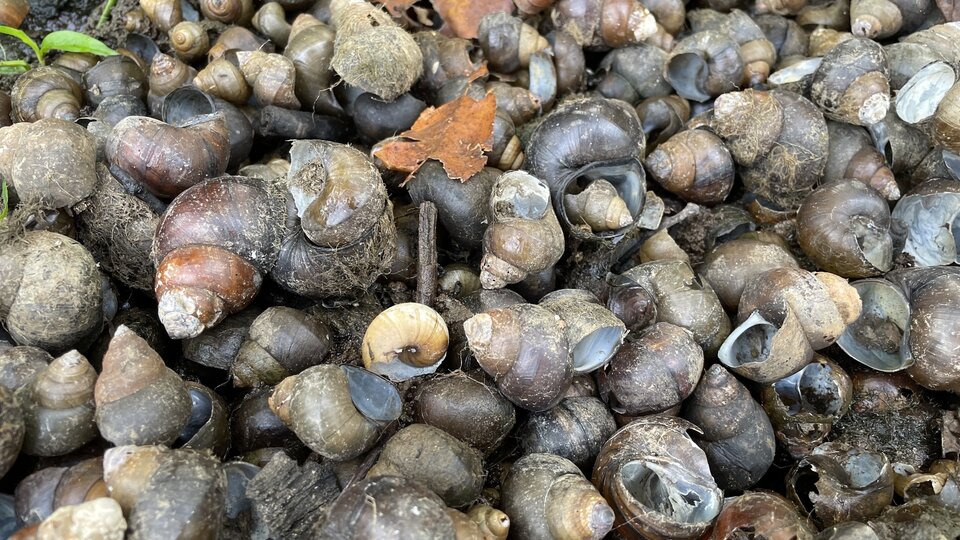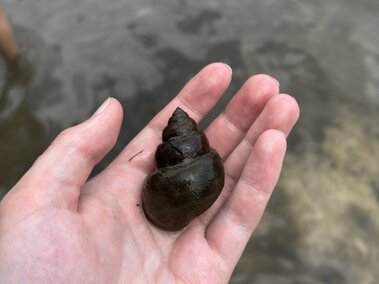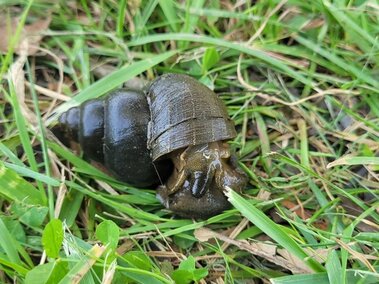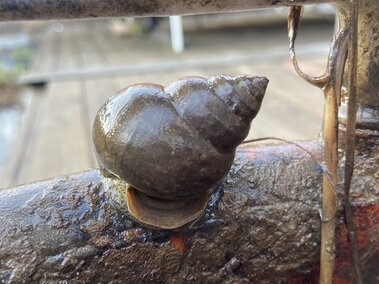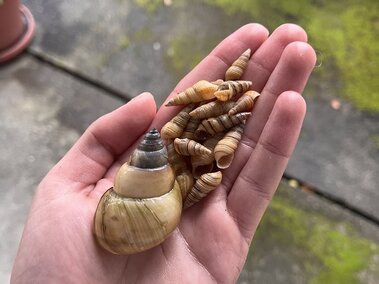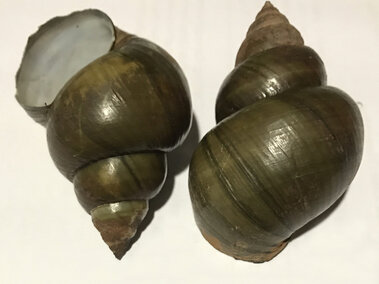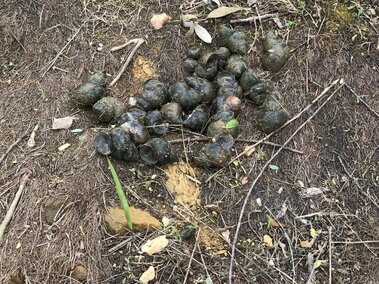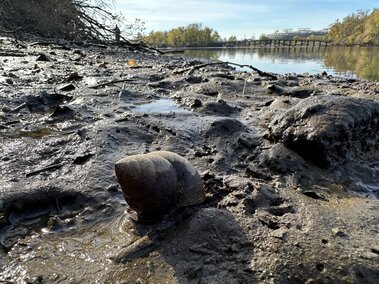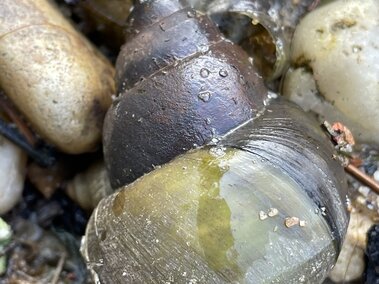General Information
Species Name: Cipangopaludina japonica
Also Known As: Heterogen japonica, Japanese black snail, Japanese mystery snail, Japanese mysterysnail, Japanese trapdoor snail, Oriental mysterysnail
Family: Viviparidae (Mystery Snail)
Life Span: 3-5 years
Life Cycle: They have separate sexes. Females tend to be larger than males. They can produce eggs in their first year, at about 40 mm, but most of the population's egg production took place in the 4th and 5th years. They can produce up to 102 embryos per brood. Eggs are brooded in a uterus, and are hatched and released during the warmer months at about 5.5 mm shell length.
Origin: Japan, Taiwan, and Korea
Injurious: No
Category 3: Established Aquatic Invasive Species
Why Are They Invasive?
This snail is abundant in some regions and may compete with native snails, but little is known about its ecological impacts. Because of its morphological similarity to trapdoor snails (Cipangopaludina chinensis), it is believed to have similar negative effects on the environment, including damaging infrastructure by clogging water intake pipes, being a potential vector for parasites and diseases, and discouraging recreational activities due to hazards from large densities of their shells being washed up on shores.
What Do They Look Like?
Black mystery snails have a shell with 7-8 whorls, a very narrow cone-shaped space at the base of the shell, and a coiled, upper portion of the shell at an angle of 50-55 degrees. Shells are light colored as juveniles and dark brown as adults. They can reach a size of 50 mm. Females are slightly larger than males. The shell's spiral is more elongated in comparison to trapdoor snails (Cipangopaludina chinensis).
Photos
Where Do They Live?
Black mystery snails live in freshwater rivers and lakes. It can urvive in conditions where surface water temperatures may reach 30ºC, bottom water temperatures can reach 16–24ºC, water is 4 m deep or less, there is high turbidity, the substrate is mud, and aquatic vegetation is sparse. It sometimes undergoes mortality events in marshes in hot periods when waters dry up. In general in North America, the Japanese mystery snail has been found inhabiting waters of pH 6.3–7.3, calcium concentration of 11 ppm, sodium concentration of 16 ppm and conductivity of 62–194 μmhos/cm.
How Do They Spread?
Black mystery snails were imported into San Francisco at an Asian food market in 1892, and soon after found to be released into the San Francisco Bay, either from accidental disposal of shell or by purposeful release for food production. It was then deliberately released into the Great Lakes where it was intentionally stocked as food for the channel catfish, Ictalurus punctatus in Lake Erie in the 1940s.
How Do I Control Them?
Contact the Nebraska Game and Parks Commission to determine appropriate control methods. To prevent their spread and introduction into your waterbodies:
CLEAN your watercraft, trailer, angling gear and other equipment. Remove all aquatic vegetation and animal species from your equipment.
DRAIN your watercraft at the ramp by removing the boat plug and draining all live wells and ballast tanks.
DRY your watercraft, trailer and other equipment for at least 7 days before visiting another waterbody.
DON'T DUMP BAIT. Dispose of bait by emptying bait buckets on dry land, away from waterbodies or in a trash receptacle. Moving a live organism from one waterbody to another is illegal, even if you are planning to use the organism as bait.
DON'T LET IT LOOSE. Do not release or transport exotic or non-native fish species to new ecosystems. It is unlawful to release any aquatic species into a waterbody other than the one from which it was harvested. Doing so can promote the spread of AIS.
What Should I Do If I See Them in Nebraska?
If you see black mystery snails in Nebraska, you should report them to the Nebraska Game and Parks Commission's Aquatic Invasive Species (AIS) Program using their AIS Report Form. For guidance on what information to include in your report, check out our reporting tips.
References and More Information
Center for Invasive Species and Ecosystem Health
Freshwater Gastropods of North America
Midwest Invasive Species Information Network
Nebraska Game and Parks Commission
Smithsonian Environmental Research Center
Summary of Species Currently Listed as Injurious Wildlife under (18 U.S.C. 42) Lacey Act
